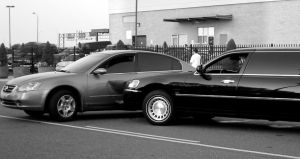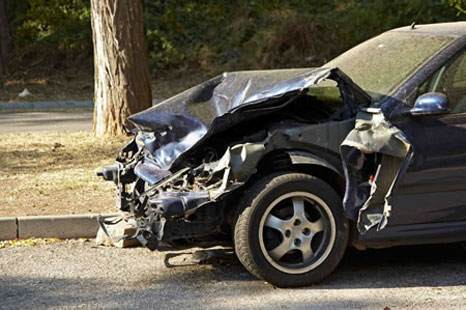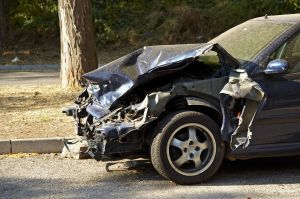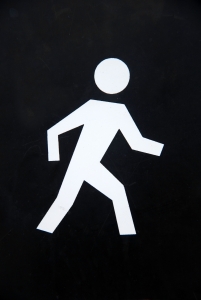Quite often, serious accidents are the final and tragic result of a long chain of events consisting of bad luck and small mistakes. When many factors contributed to the accident, determining the most important cause of the accident can be a daunting task for a San Francisco car accident attorney. In other cases, it can be obvious what caused the accident, but determining who is more responsible for the mishap can be a challenge. For example, in a recent San Francisco car accident, two drivers bear some responsibility for a collision that injured both drivers and six passengers.
 Last night, as described in an article in the Mercury, there was a two car accident. At 12:39 am a minivan broadsided a car in San Francisco’s South of Market neighborhood, at the intersection of 10th and Howard streets. The sedan was stopped a red light when the speeding van ran a red light and struck the car. In addition to the driver, the sedan contained five passengers, while the van had two occupants. All eight individuals were taken to local hospitals for serious injuries. Everyone is expected to recover fully.
Last night, as described in an article in the Mercury, there was a two car accident. At 12:39 am a minivan broadsided a car in San Francisco’s South of Market neighborhood, at the intersection of 10th and Howard streets. The sedan was stopped a red light when the speeding van ran a red light and struck the car. In addition to the driver, the sedan contained five passengers, while the van had two occupants. All eight individuals were taken to local hospitals for serious injuries. Everyone is expected to recover fully.
For the drivers, however, the event did not end with a trip to the hospital. When police arrived
on the scene, they arrested both drivers. Officials suspected that both had been driving while intoxicated. In addition, police arrested one of the van’s passengers for possession of cocaine. Officials are also investigating whether or not the van was involved in a hit-and-run accident earlier in the evening.
After accidents like this, injured parties are often reluctant to seek legal advice. Many people believe that if they contributed to the events that injured them, such as getting into car with a driver who had been drinking, the legal system will not help them. Depending on the facts of the specific situation, however, contributing to the accident is not always an absolute bar to legal recovery. Traditionally, under the theory of contributory negligence, defendants who had a role in causing an accident could not sue the plaintiff and recover.
But today, in most state, including California, contributory negligence is no longer the rule. Instead, comparative negligence governs lawsuits. Under the comparative negligence system, plaintiff who played a role in causing an accident can recover in a lawsuit, but their recovery is limited by the amount of their fault. So if a passenger was 15% at fault for getting into the car with an intoxicated driver and damages are determined to be $10,000, the plaintiff will only receive $8,500. So the plaintiff will not recover his or her full damages, but could still collect a significant amount of money.
Continue Reading ›

 San Francisco Injury Lawyer Blog
San Francisco Injury Lawyer Blog


 The verdict, believed by reporters to be the largest of its kind, is in addition to specific awards to the families of the deceased and to two others injured in the crash. The jury used California comparative negligence law to find that 59% of the fault fell on Ford Motors and this calculation did impact the injury and wrongful death awards. The reported testimony suggests that the two individuals who died in the crash were not wearing their seatbelts. While at one time a finding that the victims shared some fault might have entirely eliminated the potential for recovery on injury and wrongful death claims, the law now weighs the different factors involved and determines the degree of fault for all involved parties. The negligence of a victim can result in a reduced award but it no longer eliminates it entirely.
The verdict, believed by reporters to be the largest of its kind, is in addition to specific awards to the families of the deceased and to two others injured in the crash. The jury used California comparative negligence law to find that 59% of the fault fell on Ford Motors and this calculation did impact the injury and wrongful death awards. The reported testimony suggests that the two individuals who died in the crash were not wearing their seatbelts. While at one time a finding that the victims shared some fault might have entirely eliminated the potential for recovery on injury and wrongful death claims, the law now weighs the different factors involved and determines the degree of fault for all involved parties. The negligence of a victim can result in a reduced award but it no longer eliminates it entirely.  Cell phones are all but unavoidable in the United States these days. People use their cell phones while walking down the street, in stores, and while driving. Talking on the phone while driving is the subject of much debate. Many safety experts insist that drivers using cell phones invite accidents. Others insist that talking on the phone while driving is no more dangerous than playing with the radio or talking to a passenger in the back of the car. Nevertheless, many states, including California, have strict laws regarding the use of cell phones by motor vehicle drivers. Still, as our
Cell phones are all but unavoidable in the United States these days. People use their cell phones while walking down the street, in stores, and while driving. Talking on the phone while driving is the subject of much debate. Many safety experts insist that drivers using cell phones invite accidents. Others insist that talking on the phone while driving is no more dangerous than playing with the radio or talking to a passenger in the back of the car. Nevertheless, many states, including California, have strict laws regarding the use of cell phones by motor vehicle drivers. Still, as our  Last night, as described in an article in the Mercury, there was a two car accident. At 12:39 am a minivan broadsided a car in San Francisco’s South of Market neighborhood, at the intersection of 10th and Howard streets. The sedan was stopped a red light when the speeding van ran a red light and struck the car. In addition to the driver, the sedan contained five passengers, while the van had two occupants. All eight individuals were taken to local hospitals for serious injuries. Everyone is expected to recover fully.
Last night, as described in an article in the Mercury, there was a two car accident. At 12:39 am a minivan broadsided a car in San Francisco’s South of Market neighborhood, at the intersection of 10th and Howard streets. The sedan was stopped a red light when the speeding van ran a red light and struck the car. In addition to the driver, the sedan contained five passengers, while the van had two occupants. All eight individuals were taken to local hospitals for serious injuries. Everyone is expected to recover fully.  Our
Our